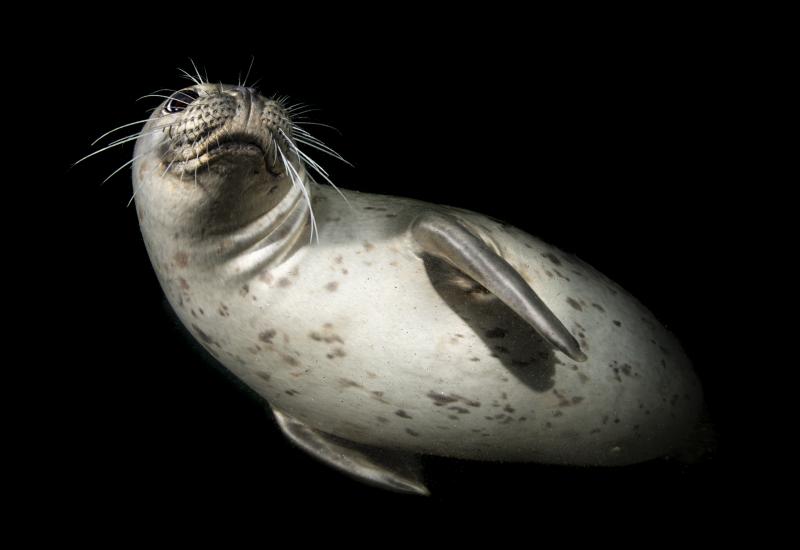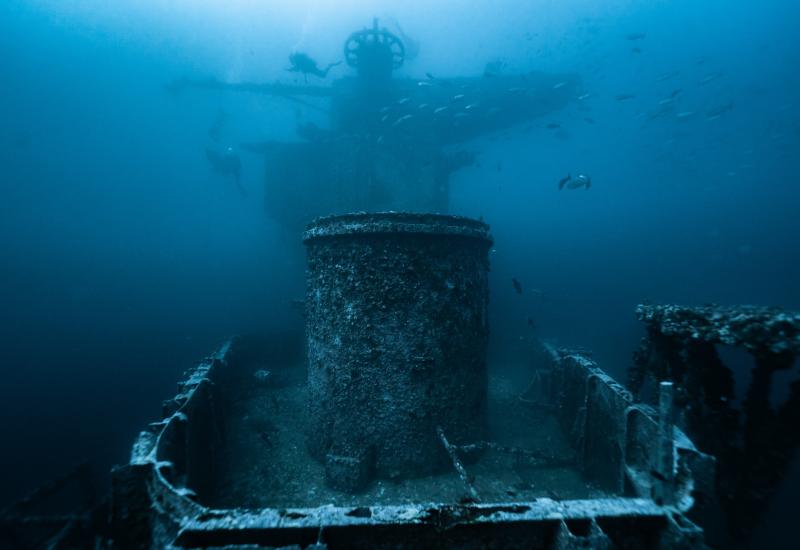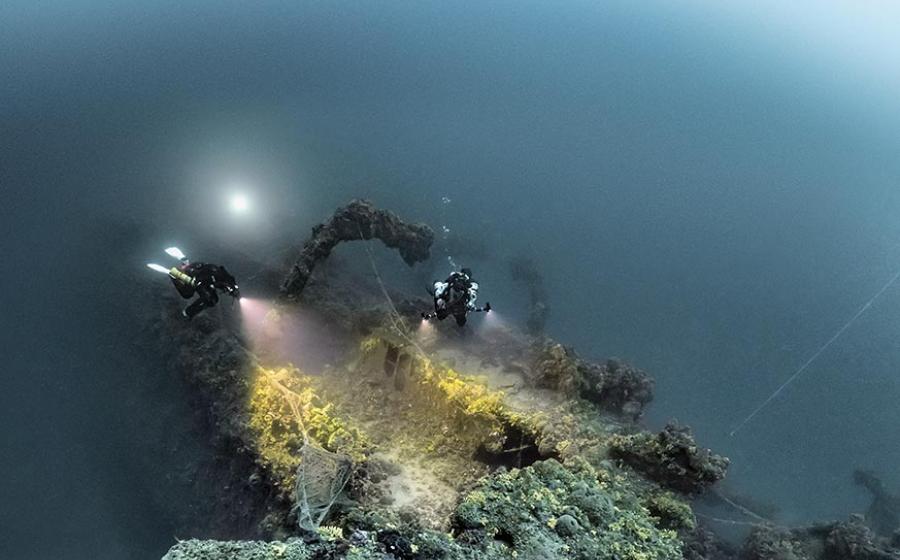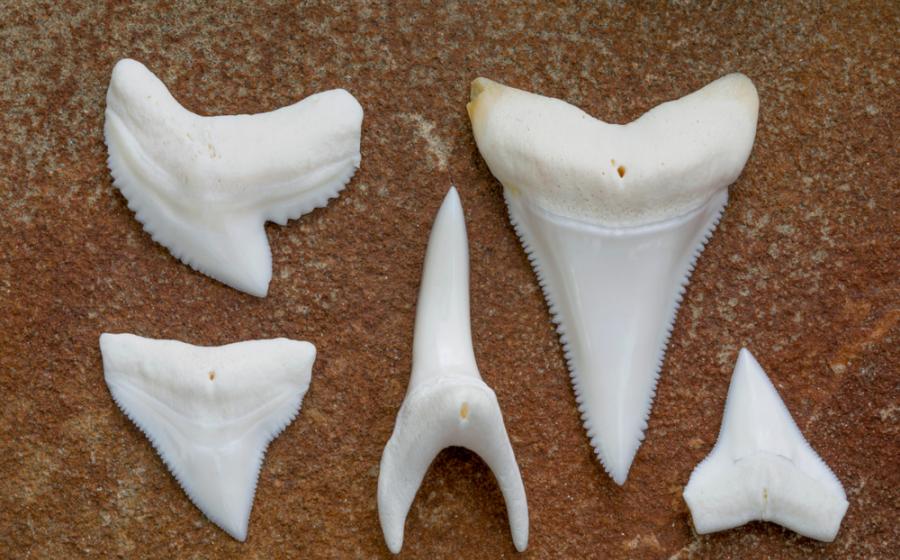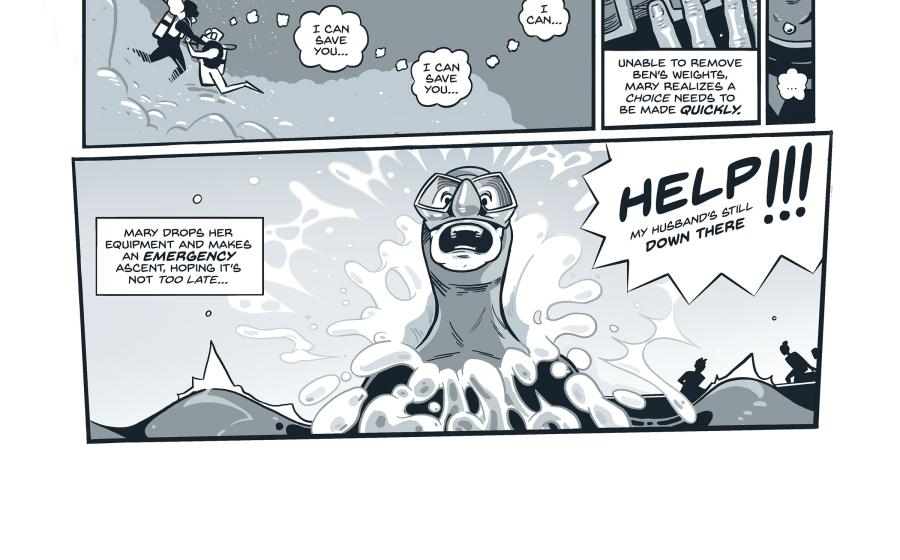Scuba Diving the Hot Spring in Utah's Homestead Crater
Hidden in the snow-covered mountains outside Salt Lake City, natural hot springs rise from 5,000 feet below.

Jennifer IdolUtah's Toasty Escape
The first visitors to Homestead Crater rappelled through a hole in the dome ceiling to reach the warm water below.
Decades later, my dive buddy and I aren’t forced to undergo the same tedious activity. Instead, we head down a walkway that was tunneled through the travertine dome, leading to a wooden platform over the water. And despite the vacationers lounging in wooden seats on either side of the platform, we experience the strange sensation of entering the water in this mile-high gem that those first visitors must have also felt.
Homestead Crater is the largest of the region’s springs, at 200 feet wide and 55 feet high. This altitude dive requires consideration for dive time, but at 65 feet deep, falls within recreational limits. Although my buddy and I head up the mountain in the snow in February, we don’t have to worry about water temperature or hypothermia because the 90- to 96-degree temperatures remain constant year-round.
The resort that maintains the crater also offers skiing, so visitors can enjoy winter sports and then soak in warm water. Reservations are required ahead of time to ensure the crater isn’t overcrowded.
Related Reading: Diving Crusty's Quarry, Pennsylvania
Although equipment can be rented, we bring our own and gear up in the parking lot. As we walk through the tunnel to giant-stride from the platform, we pass lockers and a towel station that verify admission. In the dome area, steam rises from the hot water through the winter air and out the hole in the ceiling. The dome distorts sound as it bounces across the walls, so I can hear only my buddy next to me.
The water glows brilliantly, reflecting blue throughout the crater. Much like the Valhalla missile silo in Abilene, Texas, this feels like descending down a giant tube of water.
I note the training area in the center of the crater marked by buoys with a line leading to midwater platforms and buoyancy courses. Floating calcite makes the blue water appear milky. Since the sides of the crater hold a little silt, we keep our distance from them to maintain good visibility.
Related Reading: How to Dive Sund Rock, Washington
Attractions such as wheels and toys are suspended at varying depths. They are changed periodically to keep divers engaged. No fish swim in this mineral-rich water, but at the bottom, I enjoy watching the geothermal spring bubble from below. The silt at the bottom is several feet thick and contains artifacts still being studied. We’re glad we decided not to wear any more thermal protection than our swimsuits, because even that feels hot. We benefit from using dive lights, even though the water is illuminated by spotlights.
We take our time ascending, knowing snow awaits us outside, where we close the adventure by building a scuba snowman before heading home.

